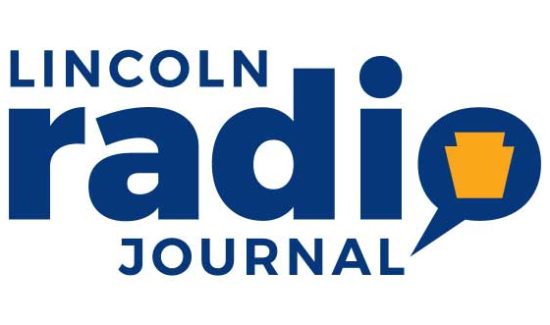Pittsburgh Region Jobs Picture Looking Up
(December 12, 2011)–Has the Pittsburgh area climbed out of the recession? Notwithstanding the commentary nationally and locally lamenting the tough economic times across much of the Country and State, the Pittsburgh metropolitan statistical area (MSA) employment picture has been showing significant improvement for most of 2011. In fact, the Bureau of Labor Statistics’ preliminary payroll survey for October 2011 shows the employee count to be at its highest October level for at least two decades going back to 1990. While data revisions have been known to reverse initially reported gains, the year-over-year increases for every month in 2011 have been quite healthy and are perhaps signaling that from a jobs standpoint, the area has exited the recession.
The number of total private jobs (not seasonally adjusted) in the Pittsburgh MSA reached 1.033 million in October—an improvement of 23,900 compared to October 2010, a rise of over two percent. As mentioned above it was the highest October reading since at least 1990, besting the previous high set in October 2008 by 3,200 jobs. In fact, since 2001 October’s private job count is the sixth highest monthly total trailing only the months of June, July, and August of 2001 and May and June of 2008.
To gain some perspective on the reasons for and sources of growth, we will look at the sectors making the greatest contribution to the recent strong performance.
Far and away the strongest private job gain (11,100) was in the Education and Health Services sector, with Educational Services (colleges, private schools, trade schools, etc.) accounting for 2,700 while Healthcare and Social Assistance accounted for the other 8,400. The largest gain within this subsector occurred in Ambulatory Health Care Services (3,900) although Hospitals (1,600), Nursing and Residential Care Facilities (1,500), and Social Assistance (1,400) also posted strong gains from a year earlier.
Overall, "Eds and Meds" contributed just under half of the 23,900 jump in private sector employment gains in the Pittsburgh MSA over the twelve month period. Historically, this sector has been steadily rising since 1990 when its annual monthly average stood at 160,200 employees and accounted for 17.5 percent of the total private jobs in the MSA. Thus far in 2011 the monthly average reached nearly 240,800—an increase of 50 percent since 1990—and now accounts for 24 percent of total private sector jobs. The big question facing the region is twofold. Can the strong growth in these sectors be sustained and is it healthy for the region to become increasingly dependent on them for job gains? To date, there has been an enormous structural advantage economically in having a large and growing Eds and Meds sector. Being highly resistant to the forces of economic slowdown, it provides a major buoying strength during recessions. But it can also become a limiting trap if too much reliance is placed on continued gains in the Eds and Meds sector.
Another major contributor to area employment robustness stems from the impact from Marcellus Shale natural gas exploration and production. That strength is ongoing as shown by the posting of a 1,000 gain in Mining and Logging from October 2010 to October 2011—an increase of 13 percent and the largest percentage increase of any sector in the MSA. Construction and Manufacturing (2,600 and 1,100 respectively) also posted significant increases, some of which is almost certainly related to Marcellus Shale activity.
Manufacturing, which had been hemorrhaging jobs in the MSA for decades, has posted year-over-year gains every month since July 2010. Coincidentally, 2010 was the year Marcellus Gas exploration really shifted into high gear in the region. On the other hand it is important to bear in mind that while the Eds and Meds sector has been rising long term as a share of jobs, Manufacturing has been in decline. In 1990, Manufacturing accounted for about 14 percent of the MSA’s total private jobs. Thus far in 2011 it accounts for only eight percent. And while the recent upturn is encouraging, it is too early to say the sector is poised to reverse the long downward trend.
Nearly all of the other major sectors such as Trade, Transportation and Utilities (3,200), Professional and Business Services (2,900), Leisure and Hospitality (1,800) and Financial Activities (800) posted gains from October 2010 to October 2011. The exception was Information where 400 fewer jobs were reported.
As far as public sector jobs are concerned it is worth noting that government employment jobs declined by 2,100. Contrary to the argument by some who claim that loss of government jobs will hurt the private sector, the Pittsburgh MSA demonstrates convincingly that is not the case.
A closer look at the Government sector shows that within the Pittsburgh MSA the State’s payroll count declined by 2,400 for a loss of 14.5 percent. This represents the largest decline of any sector in the region. However local government payrolls had a net gain of 400 resulting from an increase in local government, excluding educational service, of 1,000 and a decline in local government educational services of 600.
Interestingly enough the job performance of the Pittsburgh MSA tops the National and State growth. The number of total private jobs in the Pittsburgh area increased by 2.4 percent from October 2010 to October 2011 while National employment increased by just 1.7 percent and the State’s by only 1.5 percent. In fact, the increase in the State’s number of total private jobs during this time is 76,100. Thus, the Pittsburgh MSA (23,900) accounted for more than thirty percent of the state total.
Furthermore, the jobs increase posted in the employer survey is verified by the household survey. The seasonally adjusted household employment in October 2011 was 34,200 over the number from the same month one year ago. This increase was accompanied by a labor force jump of more than 25,000 and a decline in the number of unemployed which, taken together lowered the unemployment rate in October 2011 to seven percent.
Overall this latest payroll jobs report contains strong signals that the region has left the recession. However, there is much more work to do. Policy leaders, both locally and at the state level need to work to create a business friendly environment so that firms can either locate or expand in the Pittsburgh MSA and ensure that these most recent gains will continue. At some point, growth in sectors other than Eds and Meds and Marcellus Shale will need to begin to become invigorated.
Frank Gamrat, Ph.D., Sr. Research Associate
Jake Haulk, Ph.D., President
If you wish to support our efforts please consider becoming a donor to the Allegheny Institute.The Allegheny Institute is a 501(c)(3) non-profit organization and all contributions are tax deductible.Please mail your contribution to:
The Allegheny Institute
305 Mt. Lebanon Boulevard
Suite 208
Pittsburgh, PA15234
For more on this topic click here
Link to Allegheny Institute Website
Forward this Brief to a friend
Tel: (412) 440-0079
Fax: (412) 440-0085
Email: [email protected]







